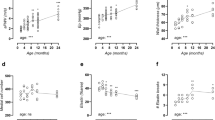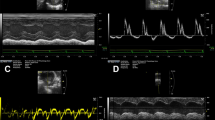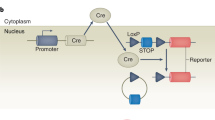Abstract
Mice are the most common animal model to investigate human disease and explore physiology. Mice are practical, cost efficient, and easily used for genetic manipulations. Although variability in cardiac structure and function among mouse strains is well noted, the effect of mouse strain on vascular stiffness indices is not known. Here, we compared mouse strain-dependent differences in key vascular stiffness indices among frequently used inbred mouse strains—C57Bl/6J, 129S, and Bl6/129S. In young healthy animals, baseline blood pressure and heart rate were identical in all strains, and independent of gender. However, both active in vivo and passive ex vivo vascular stiffness indices exhibited distinct differences. Specifically, both male and female 129S animals demonstrated the highest tensile stiffness, were least responsive to acetylcholine-induced vasorelaxation, and showed the lowest pulse wave velocity (PWV), an index of in vivo stiffness. C57Bl/6J mice demonstrated the highest PWV, lowest tensile stiffness, and the highest response to acetylcholine-induced vasorelaxation. Interestingly, within each strain, female mice had more compliant aortas. C57Bl/6J mice had thinner vessel walls with fewer layers, whereas 129S mice had the thickest walls with the most layers. Values in the Bl6/129S mixed background mice fell between C57Bl/6J and 129S mice. In conclusion, we show that underlying vascular properties of different inbred wild-type mouse strains are distinct, despite superficial similarities in blood pressure. For each genetic modification, care should be taken to identify proper controls, and conclusions might need to be verified in more than one strain to minimize the risk of false positive studies.
This is a preview of subscription content, access via your institution
Access options
Subscribe to this journal
Receive 12 print issues and online access
$259.00 per year
only $21.58 per issue
Buy this article
- Purchase on Springer Link
- Instant access to full article PDF
Prices may be subject to local taxes which are calculated during checkout






Similar content being viewed by others
References
Doevendans PA, Daemen MJ, de Muinck ED, Smits JF. Cardiovascular phenotyping in mice. Cardiovasc Res. 1998;39:34–49.
Schlager G, Weibust RS. Genetic control of blood pressure in mice. Genetics. 1967;55:497–506.
Barnabei MS, Palpant NJ, Metzger JM. Influence of genetic background on ex vivo and in vivo cardiac function in several commonly used inbred mouse strains. Physiol Genom. 2010;42A:103–13.
Hoit BD, Kiatchoosakun S, Restivo J, Kirkpatrick D, Olszens K, Shao H, et al. Naturally occurring variation in cardiovascular traits among inbred mouse strains. Genomics. 2002;79:679–85.
Ryan MJ, Didion SP, Davis DR, Faraci FM, Sigmund CD. Endothelial dysfunction and blood pressure variability in selected inbred mouse strains. Arterioscler Thromb Vasc Biol. 2002;22:42–8.
Fujii M, Hara H, Meng W, Vonsattel JP, Huang Z, Moskowitz MA. Strain-related differences in susceptibility to transient forebrain ischemia in SV-129 and C57black/6 mice. Stroke. 1997;28:1805–10.
Di Lazzaro V, Pilato F, Dileone M, Tonali PA, Ziemann U. Dissociated effects of diazepam and lorazepam on short-latency afferent inhibition. J Physiol. 2005;569:315–23.
Vlachopoulos C, Aznaouridis K, Stefanadis C. Prediction of cardiovascular events and all-cause mortality with arterial stiffness: a systematic review and meta-analysis. J Am Coll Cardiol. 2010;55:1318–27.
Steppan J, Barodka V, Berkowitz DE, Nyhan D. Vascular stiffness and increased pulse pressure in the aging cardiovascular system. Cardiol Res Pract. 2011;2011:263585.
Oh YJ, Pau VC, Steppan J, Sikka G, Bead VR, Nyhan D, et al. Role of tissue transglutaminase in age-associated ventricular stiffness. Amino Acids. 2017;49:695–704.
Steppan J, Wang H, Bergman Y, Rauer MJ, Tan S, Jandu S, et al. Lysyl oxidase-like 2 depletion is protective in age-associated vascular stiffening. Am J Physiol Heart Circ Physiol. 2019;317:H49–59.
Steppan J, Sikka G, Jandu S, Barodka V, Halushka MK, Flavahan NA, et al. Exercise, vascular stiffness, and tissue transglutaminase. J Am Heart Assoc. 2014;3:e000599.
Jung SM, Jandu S, Steppan J, Belkin A, An SS, Pak A, et al. Increased tissue transglutaminase activity contributes to central vascular stiffness in eNOS knockout mice. Am J Physiol Heart Circ Physiol. 2013;305:H803–10.
Steppan J, Bergman Y, Viegas K, Armstrong D, Tan S, Wang H, et al. Tissue transglutaminase modulates vascular stiffness and function through crosslinking-dependent and crosslinking-independent functions. J Am Heart Assoc. 2017;6:2.
Barreto Ortiz S, Hori D, Nomura Y, Yun X, Jiang H, Yong H, et al. Opsin 3 and 4 mediate light-induced pulmonary vasorelaxation that is potentiated by G protein-coupled receptor kinase 2 inhibition. Am J Physiol Lung Cell Mol Physiol. 2018;314:L93–106.
Hori D, Dunkerly-Eyring B, Nomura Y, Biswas D, Steppan J, Henao-Mejia J, et al. miR-181b regulates vascular stiffness age dependently in part by regulating TGF-beta signaling. PLoS ONE. 2017;12:e0174108.
Natarajan N, Hori D, Flavahan S, Steppan J, Flavahan NA, Berkowitz DE, et al. Microbial short chain fatty acid metabolites lower blood pressure via endothelial G protein-coupled receptor 41. Physiol Genom. 2016;48:826–34.
Steppan J, Tran HT, Bead VR, Oh YJ, Sikka G, Bivalacqua TJ, et al. Arginase inhibition reverses endothelial dysfunction, pulmonary hypertension, and vascular stiffness in transgenic sickle cell mice. Anesth Analg. 2016;123:652–8.
Wagenseil JE, Mecham RP. Vascular extracellular matrix and arterial mechanics. Physiol Rev. 2009;89:957–89.
Zieman SJ, Melenovsky V, Kass DA. Mechanisms, pathophysiology, and therapy of arterial stiffness. Arterioscler Thromb Vasc Biol. 2005;25:932–43.
Steppan J, Tran H, Benjo AM, Pellakuru L, Barodka V, Ryoo S, et al. Alagebrium in combination with exercise ameliorates age-associated ventricular and vascular stiffness. Exp Gerontol. 2012;47:565–72.
Funding
This work was supported by two Stimulating and Advancing ACCM Research (StAAR) grants from the Department of Anesthesiology and Critical Care Medicine at Johns Hopkins University (to LS and JS), a JHU Discovery Award and MedImmune research award (to LS), and a K08 grant (K08HL145132) from the National Heart Lung and Blood Institute (to JS).
Author information
Authors and Affiliations
Corresponding author
Ethics declarations
Conflict of interest
The authors declare that they have no conflict of interest.
Additional information
Publisher’s note Springer Nature remains neutral with regard to jurisdictional claims in published maps and institutional affiliations.
Rights and permissions
About this article
Cite this article
Steppan, J., Jandu, S., Wang, H. et al. Commonly used mouse strains have distinct vascular properties. Hypertens Res 43, 1175–1181 (2020). https://doi.org/10.1038/s41440-020-0467-4
Received:
Revised:
Accepted:
Published:
Issue Date:
DOI: https://doi.org/10.1038/s41440-020-0467-4
Keywords
This article is cited by
-
Standardisation and future of preclinical echocardiography
Mammalian Genome (2023)
-
Annual reports on hypertension research 2020
Hypertension Research (2022)
-
Probing tissue transglutaminase mediated vascular smooth muscle cell aging using a novel transamidation-deficient Tgm2-C277S mouse model
Cell Death Discovery (2021)
-
Genetically modified mouse models to help fight COVID-19
Nature Protocols (2020)
-
Appropriate selection of a mouse strain in accordance with the vascular properties
Hypertension Research (2020)



